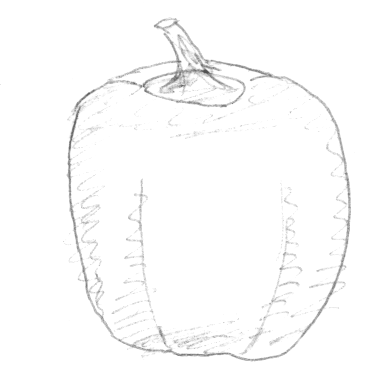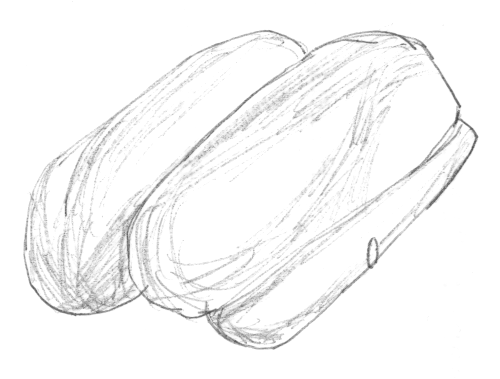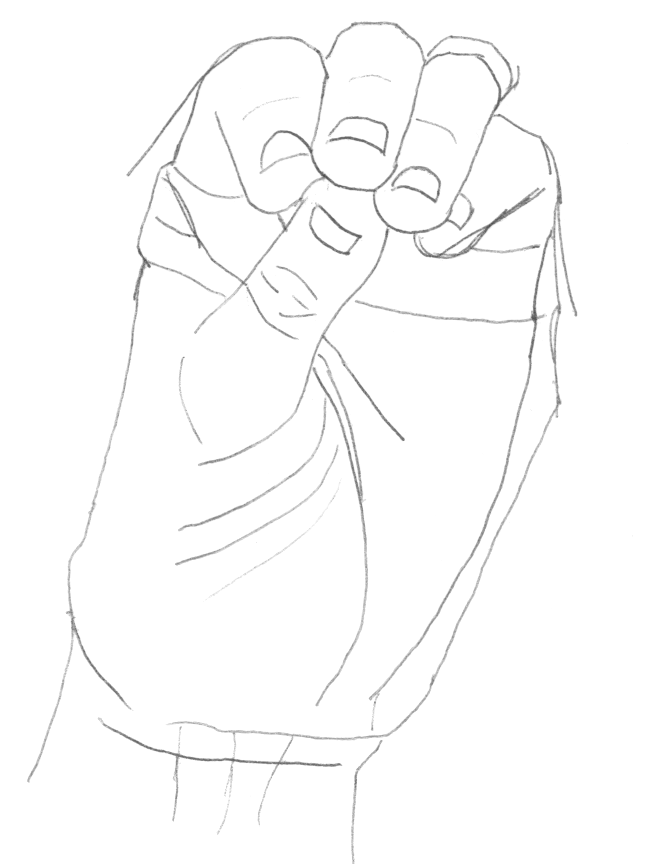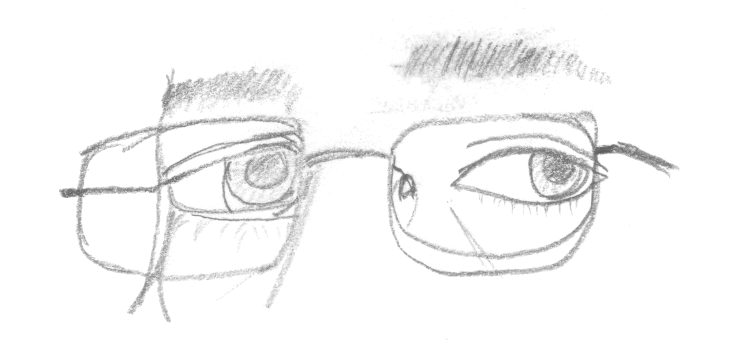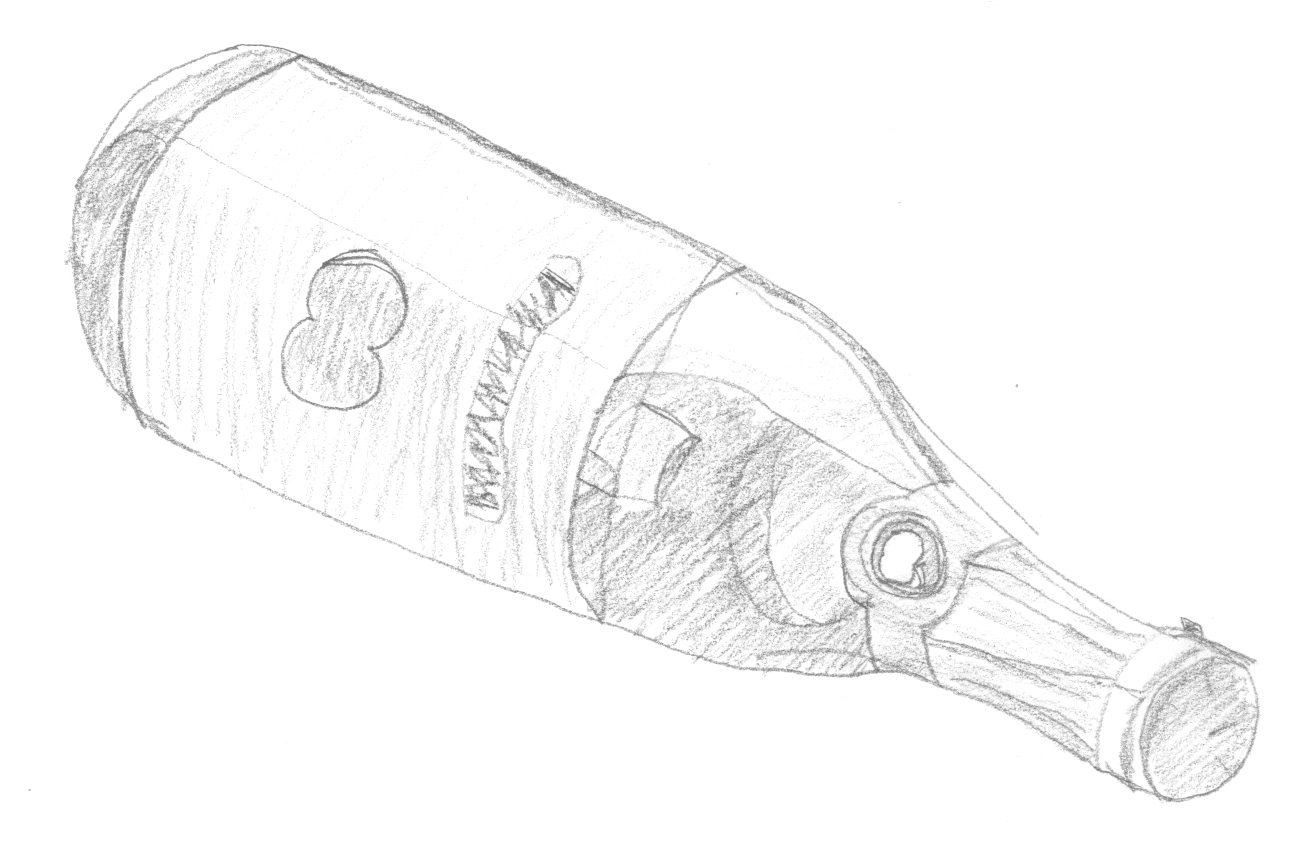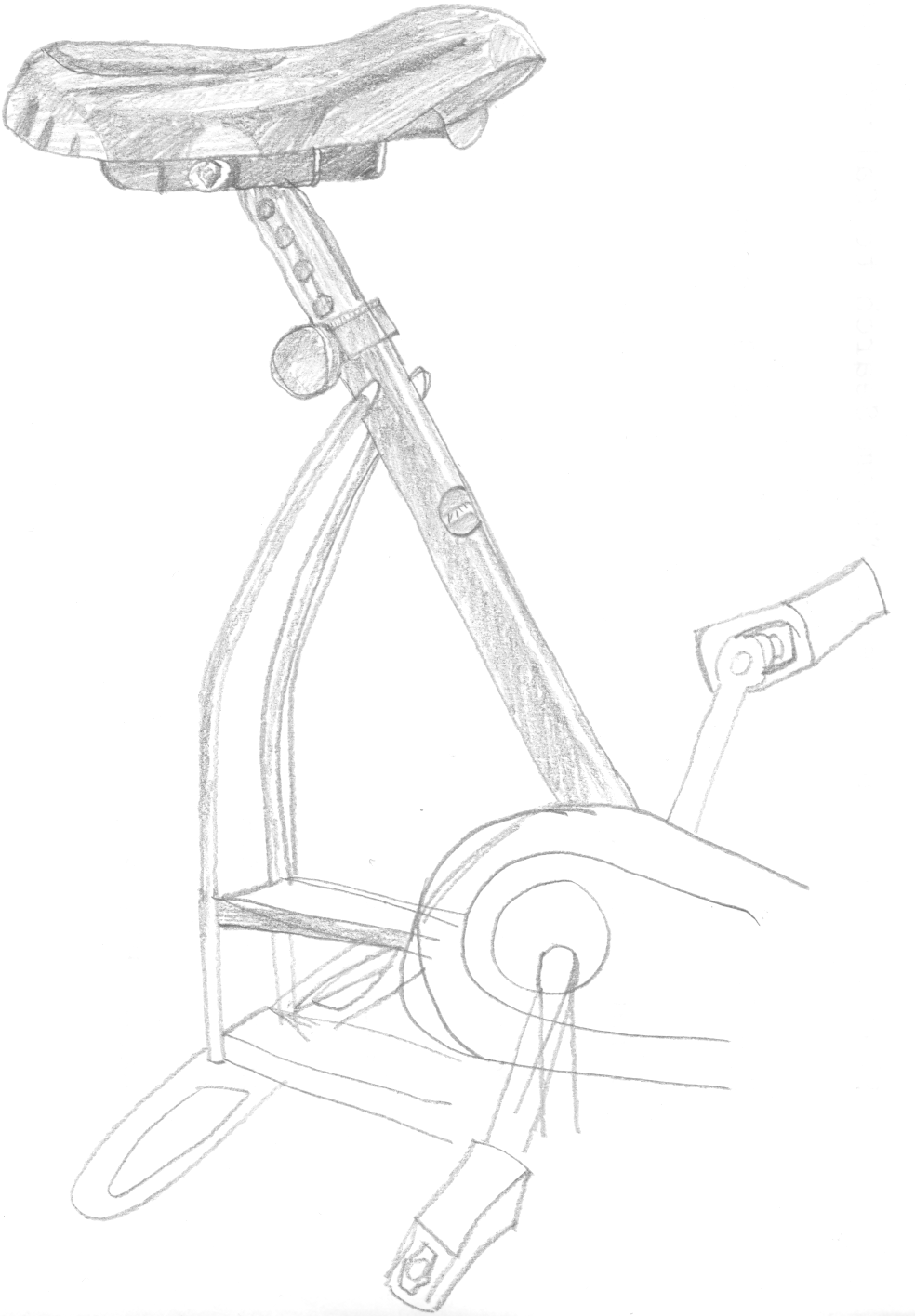Seeing comes first. When rules conflict with seeing, forget them and draw what you see. This is what is meant by retaining an “innocent vision.” That is, to look at something as if you have never seen it before, and to be unclouded by assumptions about how a thing is supposed to look. The one simple rule to follow is: at each point of frustration or confusion, ask yourself, “What do I see?” (p. 17)
If you’ll excuse me for veering off the topic of drawing, this idea has been very important to me recently even though I didn’t think of it specifically as a conflict between knowing and seeing. One of the exercises illustrates the conflict. I first drew a green pepper from memory:
Then I drew a green pepper while looking at one (actually half of one) that I had available:
Our memories are only symbols. We walk around with preconceived notions that contain only a fraction of the information available in our first-hand experiences. Our memories are not our experiences. They are only derivative and shallow. Those prejudices based on memories get in the way of drawing because they separate us from what something really looks like. It is important to be able to suspend what we think we know in order to see clearly.
When I read this in the book, I immediately thought of my deconversion from Mormonism and theism. That process was driven in part by looking at my experiences with innocent eyes.
Anyway, back to drawing. This drawing is of my hand. The book said that if my drawing actually looked like a hand that I hadn’t done it right. Mission accomplished:
Then we have my eyes, or a crude approximation thereof. I really want to be able to draw human beings, but I have a long way to go:
A bottle laying on the table:
And an exercise bike:
]]>